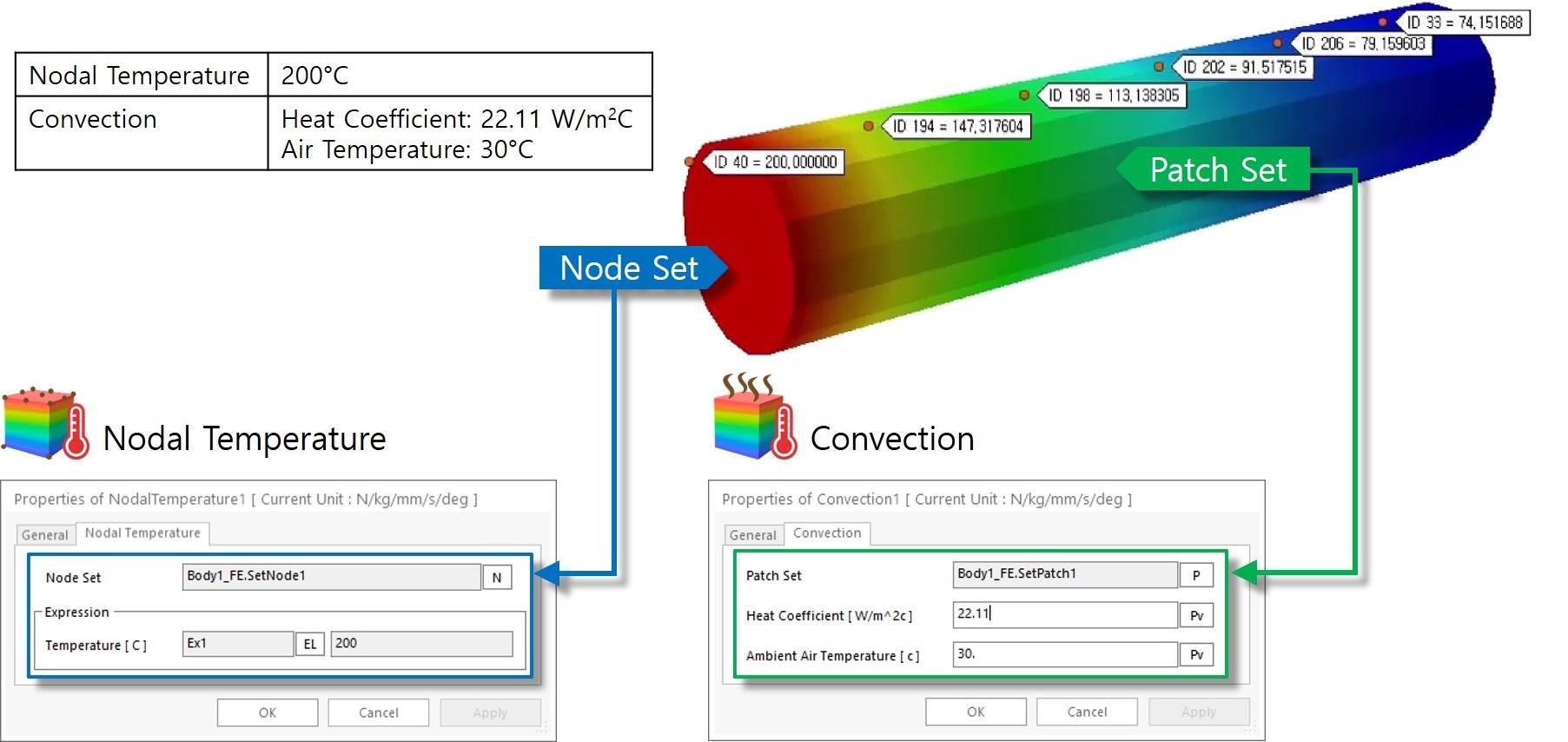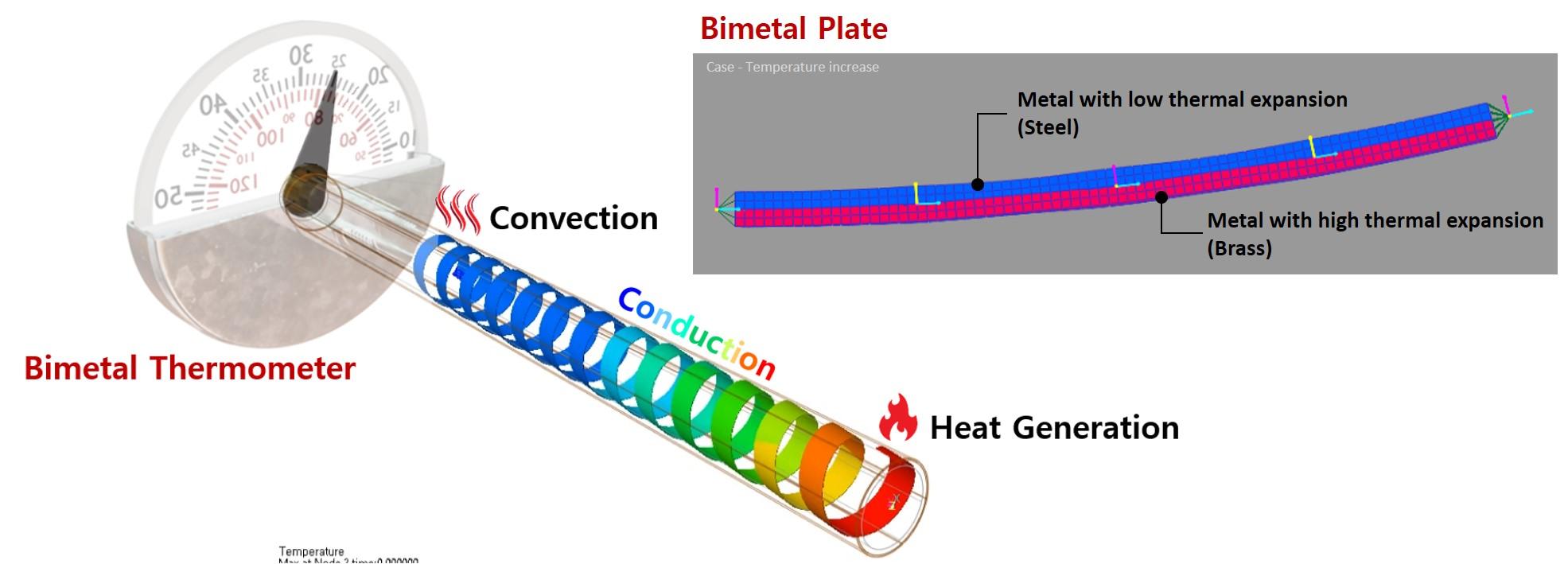FFlex Thermal 글 편집 글 편집 (이전 에디터)
Overview

- RecurDyn FFlex is possible to consider the thermal stress and thermal expansion due to a temperature change within a flexible body.
- Boundary conditions can also be set to include additional heat transfer effects such as Convection, Heat Generation, or Heat Flux.
-
Supported elements
- Beam2
- Shell3, Shell4, Shell9
- Solid4, Solid5, Solid6, Solid8, Solid10, Solid26
Features
1. Material Properties

-
Thermal Characteristics: The temperature properties for material can be specified in the material Properties window. (Elastic/Isotropic only)
- Thermal Coefficient (Coefficient of thermal expansion)
- Reference Temperature (Temperature at which no thermal stress occurs in the material or initial temperature in RecurDyn)
- Specific Heat
- Thermal Conductivity
2. Thermal Conductivity Analysis

- Nodal Temperature: Defines the temperature condition by entering an Expression for a Node Set.
- Heat Flux: Defines the amount of heat influx per unit area by entering an Expression for a Patch Set. The area inflow direction can be set to either Up or Down.
- Convection: It is now possible to select a Patch Set and enter a Heat Coefficient and Ambient Air Temperature to define the amount of surface heat transfer by convection.
- Heat Generation: Defines the energy generated per unit volume by entering an Expression for an Element Set.
3. Thermal Load

- RTL Generation: It is now possible to generate RTL files in CSV file format from the thermal conductivity analysis results of flexible bodies.
-
Thermal Load
- To calculate the thermal load, the temperature of each node is defined using Expression.
- Analysis considering the converted thermal load is possible.
- Applying the RTL file to the thermal load allows an analysis to consider the thermal load without performing a heat transfer analysis.
Benefits
- RecurDyn can perform thermal conductivity analysis without using any other software.
- This allows you to check the effects of thermal expansion and thermal stress of a flexible body when performing multi flexible body dynamics analysis.
- It is now possible to perform dynamic analysis in consideration of thermal stress on the structure and parts of a system that generates a lot of thermal energy and to improve the design for system operation with reliability and stability.
Examples
Example 1. Cooling of Steel Rod
- Analysis Conditions: Cooling by convection from initial temperature 200°C to 30°C

Example 2.Hollow Cylinder with Fixed Temperature & Convection
-
Analysis Conditions: Temperature rise due to convection inside cylinder and fixed external temperature condition

Application
Bimetal Thermometer (Helical Type)
-
Bimetal Thermometer (Helical Type)
- The helix is fixed on one end and the other end will twist or rotate directly proportional to the temperature change
- A calibrated gauge with indicator is attached to the rotating end for direct indication of the sensed temperature
-
RecurDyn Modeling
- Plate Top: Thermal insulation (Steel)
- Plate Bottom: Thermal insulation (Brass)
- Left end: Convection
- Right end: Heat Generation




